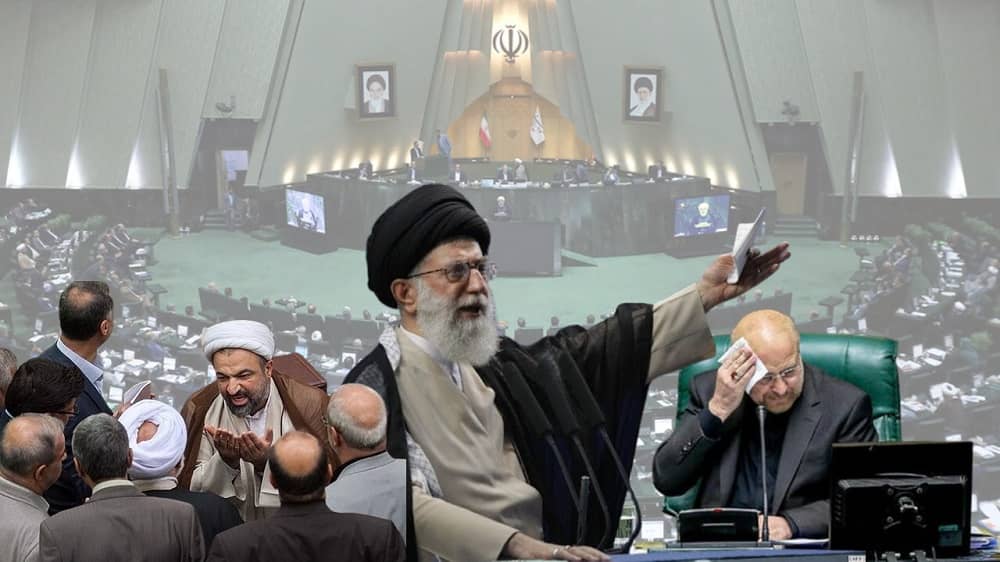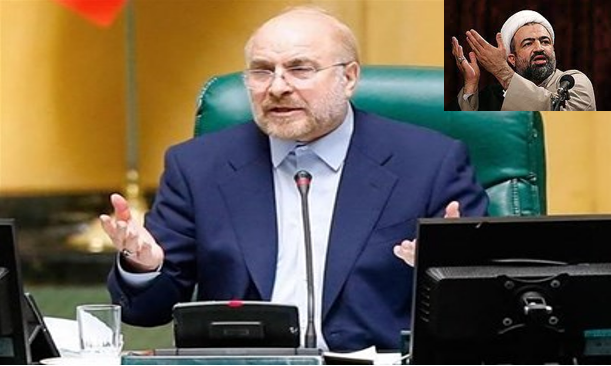

The Speaker of the Parliament, once seen as a pillar of the regime’s power structure, is grappling with significant challenges that hint at a potential reshuffling of the country’s political hierarchy. Recent developments and internal conflicts within the regime point to a tumultuous period for Ghalibaf, signaling deeper issues within Iran’s governing elite.
Leaks from parliamentary servers have brought to light Ghalibaf’s active involvement in pushing forward legislative actions and budgets that align with the directives of the Supreme Leader’s Office and the Islamic Revolutionary Guard Corps. Yet, his endeavors have led to friction with Ebrahim Raisi’s administration, framing him as a disruptor in Supreme Leader Ali Khamenei’s quest for unified governance.
The parliamentary elections on March 1 were a clear indicator of Ghalibaf’s waning political influence, as he secured a distant fourth place in Tehran. This setback, along with the emergence of anti-Ghalibaf factions, raises questions about his ability to maintain his leadership role in the Majlis, Iran’s Parliament.
Watch and judge how #IranRevolution has intensified internal strife in the #Iranian regime pic.twitter.com/arCJuckShF
— NCRI-FAC (@iran_policy) December 24, 2023
Ghalibaf’s political narrative reflects the shifting sands within the regime’s hardliner factions, once unified under Khamenei’s vision. His estrangement from key allies, especially those in the Paydari Front, underscores the volatile nature of Iran’s internal political dynamics. The 2017 presidential election and the subsequent 2020 parliamentary elections have exposed and deepened the divisions within the hardliner camp, leading to a break between Ghalibaf and the Paydari Front.
The ascent of political figures like Hamid Rasaee, Amirhossein Sabeti, and Mahmoud Nabavian signifies a significant recalibration of power within the legislative branch, suggesting a redefinition of the regime’s power dynamic. These accusations are part of a broader attempt to undermine Ghalibaf’s position, reflecting the intense competition for political dominance within the regime.
The Supreme Leader’s strategy to leverage regional turmoil and increase executions to suppress dissent and portray a facade of unity through elections has faced setbacks. The widespread boycott of the elections by the Iranian populace contradicts Khamenei’s narrative, demonstrating the continued unrest and opposition within the society.

Ghalibaf’s political fate is now uncertain, emblematic of the broader contest for supremacy within the regime’s hardliner circles. The outcome of this power struggle will indicate whether Khamenei can push forward his agenda or if he will have to retreat in the face of internal opposition.
In Iran’s clerical dictatorship, the rise and fall of political figures like Ghalibaf are indicative of the transient nature of power. Past allies of Khamenei, regardless of their roles, have either.

MEK Iran (follow us on Twitter and Facebook), Maryam Rajavi’s on her site, Twitter & Facebook, NCRI (Twitter & Facebook), and People’s Mojahedin Organization of Iran – MEK IRAN – YouTu







